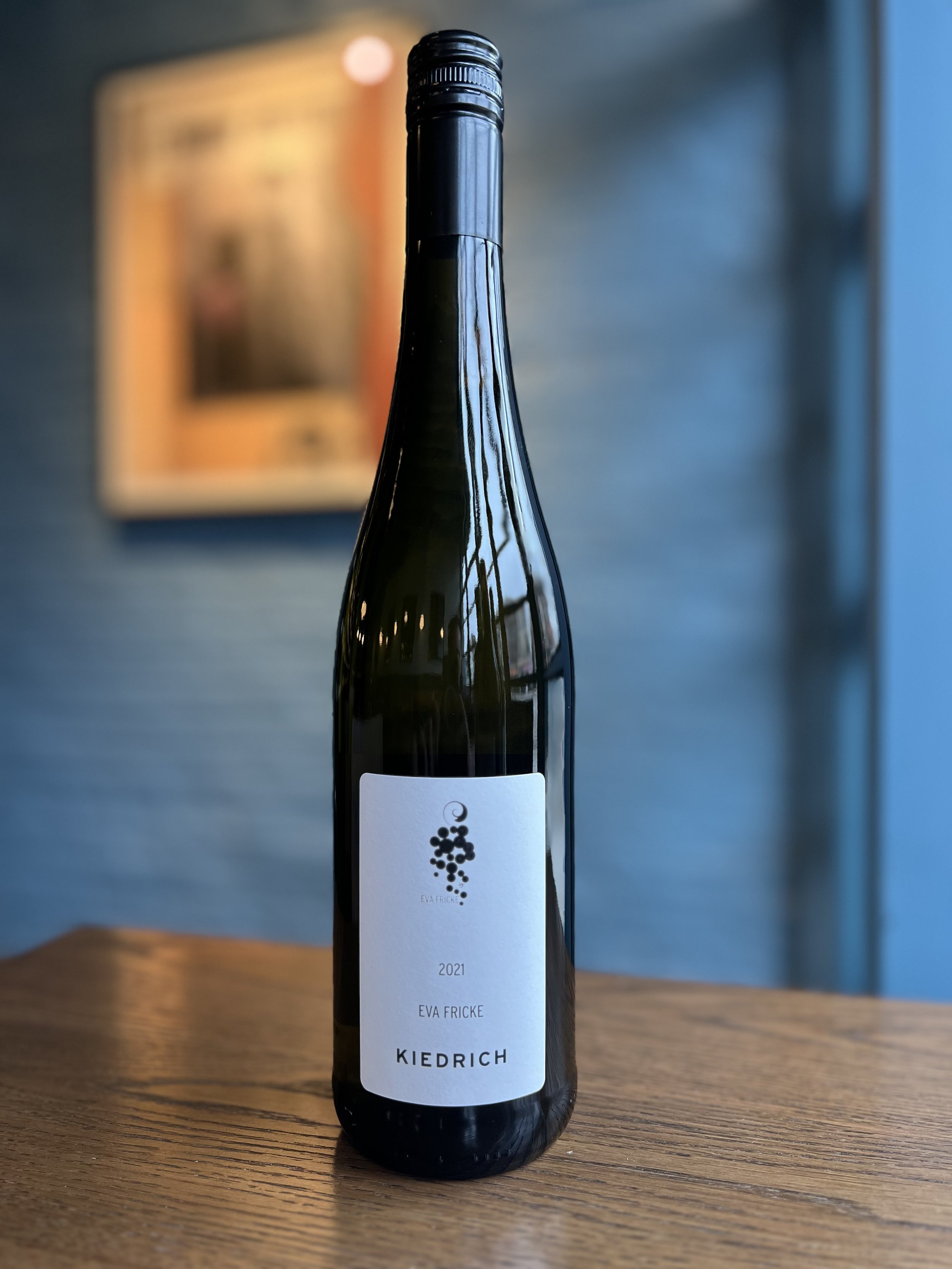Eva Fricke “Kiedrich”
RHEINGAU, GERMANY | 2021
Clustered along the northern bank of a very brief bend in the Rhine river is the wine-growing region named the Rheingau, home to some of the oldest and most storied wine estates in the world, such as Schloss Johannisberg, where Benedictine monks began making wine in 1100. This is the smallest of the major German wine regions, yet it is mighty in history. It has been associated with winemaking since the Dark Ages and is even potentially the origin of late-harvest wine—the first Spätlese Riesling was made here in 1775.
The region has been associated with sweet wines from late harvest and Süssreserve additions since World War II, yet its real strength is in its dry wines—championed by iconoclasts such as Hans Joseph of J. B. Becker. While the dry wines of the late 20th century here were perhaps too austere for their own good, warmer vintages have brought much-appreciated charm and nuance to these poised and even aristocratic wines.
Eva Fricke is an unlikely icon for the Rheingau but perfectly embodies the new era of German wine as a first-generation agricultural pioneer. An outsider both to the region and winemaking, from the beer making area Lower Saxony, she is the child of two doctors. She first came to the Rheingau via her studies at Geisenheim, but she left and worked in Piedmont, Bordeaux, Australia, and other far-flung places. She very consciously returned to the Rheingau because of the incredible diversity of geology, soil, and climate, and her knowledge of neglected old vines in Lorch along extremely perilous and difficult-to-work, steep slopes. As you might imagine, the work is hard, and yields are low with such sites, but the payoff is clear in the depth and nuance of the wines, as well as the valuable preservation of the region’s cultural heritage.
Eva worked for J. B. Becker for a couple of years when she returned to the region in 2002, before moving on to work as the technical director for the well-known Leitz estate. It was while working for Leitz that she made her first wines from just 0.25 hectares of vines in 2006 (that's about 800 TOTAL bottles), and she eventually left her job to focus on the namesake winery full time in 2011. Through a combination of leasing and purchasing vineyards, she has grown the domaine to a formidable 17 hectares, a remarkable size given the hands-on work it takes to farm these sites organically.
In terms of profile, these wines could not be more different from those of her old employer J. B. Becker, known for extremely long and slow élevage in ancient casks. Instead, here the standard is stainless steel, which allows for an intensity of precision and detail reflected in a vibrant minerality and fresh, energetic fruit. The wines are built on a subtle counterbalance of extremely bright and crisp acidity and a striking depth of texture and fruit.
This fantastic dry Riesling comes from the Klosterberg and Sandgrub vineyards in Keidrich. The 2021 is absolutely gorgeous with aromatics of orange blossom, lemon and crushed stones. The palate has some richness, but yet there is the piercing acidity, and saline notes that one expects from a great dry Riesling from Fricke. A wine like this is so versatile at the table, and work with everything from fish to poultry to pork.
Normally this wine is over $50 per bottle, but with a recent transition to a new importer, we were able to offer this in our wine club.

